
13 spectacular views to seek out during your next Norwegian self drive tour
Are you planning a summer self-drive in Norway? There are several gorgeous opportunities to enjoy both stunning landscapes and jaw-dropping architecture along the way.
Our staff will respond to your query promptly and provide detailed information to your questions.
7 days - Historic and Design Hotels of Norway - an independent self-drive through the fjords and coast of Norway.
If you are into setting your own pace, want to see some spectacular areas away from the tourist traps, and like good food & great hospitality, then this self-drive itinerary is for you! The Norwegian mountains and fjords are home to some of the most picturesque landscapes and this trip takes you to some prized secrets.
Read our favourite journalist, Barry Stone's article about staying in remote accommodation in Norway here. He travelled on an independent self-drive through Norway and Sweden with us.

As a Certified B Corporation, 50 Degrees North has designed this tour using handpicked local hoteliers and suppliers who share our ethos of delivering services and activities of high social and environmental standards.
The CO2-e per person per day of all tours is carefully measured following each season. We fully offset all emissions of our tours on your behalf, and we constantly look at ways to reduce emissions where possible.
Car hire 7 days, Group CDAR including CDW, free mileage & one way fee (from Bergen to Ålesund).
Please ask us about upgrading to an eco-friendly vehicle such as hybrid or fully electric. It is very easy to travel around Norway these days with electric cars.
Bergen is known as the "The Gateway to the Fjords of Norway" and it is a lively town with small-town charm and international feel. We have included a walking tour via the famous fish market and along the Bryggen, the old Hanseatic wharf which is architecturally unique and listed on the UNESCO World Heritage list. Also worth a visit is the Fløibanen funicular which will take you to Mount Fløyen for the best views over the town.
This morning join a easy hike around the Mundal Valley, walking on farmers gravel roads. It is an easy and peaceful trail with an ascent of 0 - 350m, with a final steeper section that leads you to an old 'seater', where milking cows and sheep are grazing. Here you could have lunch, and walk the same way back again.
In the afternoon, if time allows, you could do a drive to discover more of Lusterfjord in the inner reaches of the Sognefjord. Depending on time, you can drive through some of Norway's most spectacular and scenic areas, past the UNESCO's World Heritage Urnes Stave Church and through picturesque small villages.
Relax in the floating sauna in the late afternoon before dinner.
This morning, drive to Loen and take the gondola up to the top of Loen Skylift. Continue on to Juvet Landscape Hotel near the spectacular Gudbrandsjuvet falls. Juvet is like nothing else in Norway, as it combines the traditional old with modern architecture right in the middle of dramatic Norwegian scenery.
This morning, join a kayak tour on the Norddalsfjorden, just outside Valldal. Your guide will share of their local knowledge, and stories, tales and legends are told to give you an fun and interesting insight to the daily life in Valldal.
The afternoon is free for exploration before enjoying another night at the Juvet Landscape hotel.
This morning, drive towards your final destination Ålesund and join a sea safari. Sail over the ocean to the outward outposts of Nordic nature and get up close to the unique local wildlife in a non-intrusive, but naturally immersive manner. The Wildlife Sea Safari will make you feel like you’re in the middle of your own National Geographic wildlife TV series. Gaze out on seal colonies, the occasional whale, pods of dolphins and a wide and wonderful variety of Atlantic puffins, Black-legged kittiwakes, Common guillemots, Fulmars, Razorbills, and Northern gannets to name just a few of the bird species on view.
Return your hire car this morning at the airport before proceeding to your onward destination.
All prices listed are per person, based on two people sharing a room.
Juvet Hotel always has very limited availability so start planning 9-12 months ahead if you wish to include this hotel.
For a greener option, please ask us about changing your vehicle to a 'green' car; either an electric or a hybrid.
Please note that this trip can easily be shortened or lengthened. Call us for more options as it is just such a lovely place in the world to explore.
Driving in Norway during the peak season (July - early August):
Europeans love driving in Norway and during the summer months, the more popular tourist roads becomes crowded with European vans. This can slow the roads down, as it can be difficult to pass these vans. Norwegian country roads are often quite narrow. Having said this, these roads are incredibly scenic and have lots of picnic & photo spots.
If you are going to be using ferries during your drive, depending on the size of the ferry, this might involve a wait to get on. The ferries are reliable and regular but you may need to arrive early to secure a spot in the line. On some of the ferries, we suggest considering catching a ferry outside of the peak times. Your accommodation hosts can help with suggestions for your following days travel with the most up to date local information.
Image courtesy of Juvet Landscape Hotel
IMPORTANT NOTE: Weather conditions may occasionally affect certain activities, and as a result, the schedule may be adjusted to ensure the best possible experience for all guests. For multi-activity stays, often the order of the activities will be confirmed locally on arrival. Activities might vary slightly in their duration or location due to the weather and local conditions. Any activities that are unable to be re-scheduled due to weather conditions, will be refunded as a general practice, as determined by the activity provider.
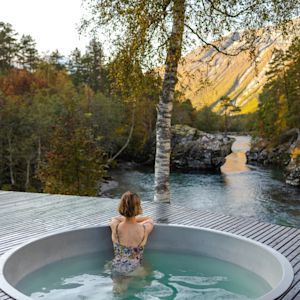
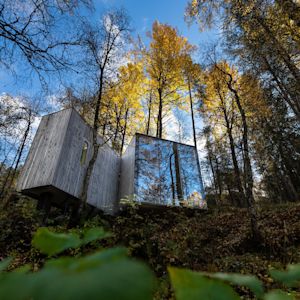
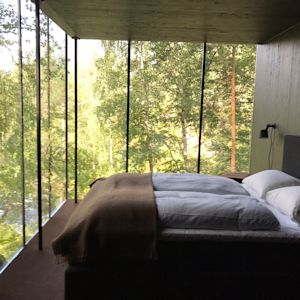
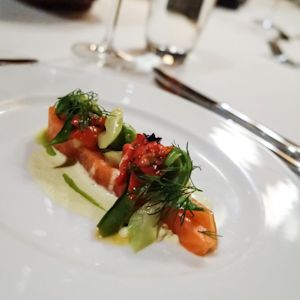
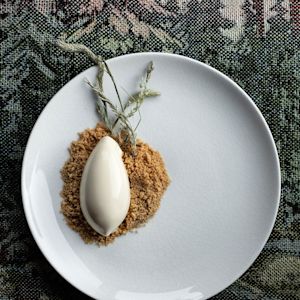
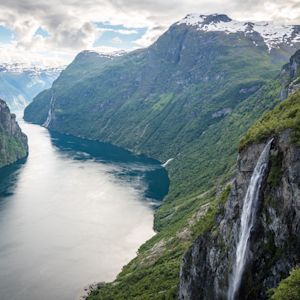
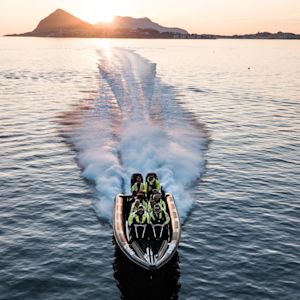
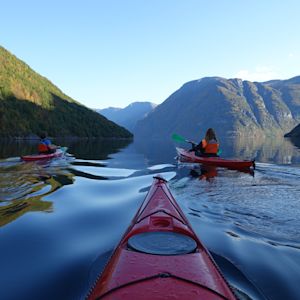

Are you planning a summer self-drive in Norway? There are several gorgeous opportunities to enjoy both stunning landscapes and jaw-dropping architecture along the way.

Not only is the Havila Coastal Voyage a wonderful way to slowly enjoy Norwegian scenery and local produce, but it is also a terrific way to learn more about Norway's fascinating history.
Growing up in Oslo myself, these destinations are where locals like to visit on their afternoons or weekends.
Travel insurance is compulsory for all tours with 50 Degrees North. The safety of our travellers, staff and operators is a major priority of 50 Degrees North. With an operational office in Norway, 50 Degrees North has access to an up-to-the-minute flow of information regarding the countries we work in. We are also in regular contact with the various operators we use. Their in-depth knowledge and understanding of their various areas is vital.
Norway has a few items that typically surprise travellers when visiting Norway for the first time. Alcohol and luxury items are heavily taxed and therefore prices are higher than you might expect. On the other hand, necessities such as bread and milk, are taxed low and therefore are great value.
We recommend that you bring all the alcohol you’re allowed to bring into the country when you arrive. There are many lovely parks and balconies where you can enjoy your duty free. However, be sure not to bring more than you’re allowed!
As of May 2014, the allowances according to Visit Norway are:
Alcoholic beverages:
Minimum age: 18/ 20*
1 litre of beverages with more than 22% up to and including 60% alcohol per volume as well as 1½ litre with more than 2.5% up to and including 22% alcohol per volume or three litres with more than 2.5% up to and including 22% alcohol per volume
and
2 litres of beer with more than 2.5 % or other beverages with more than 2.5% up to and including 4.7% alcohol per volume.
This means that you may for example bring with you five litres of beer provided you do not have any other alcoholic beverages with you.
*For importing alcoholic beverages with more than 22% alcohol per volume the minimum age is 20.
It’s illegal to bring extra alcohol into Norway and can end up costing you. Another thing you should bring and not buy in Norway is razor blades. Good razor blades in Norway are expensive.
Written by Jayde Kincaid, who married a Norwegian, and was happily (albeit with some hesitation) introduced to a world of Norwegian every day food habits.
At 50 Degrees North, we want to encourage our travellers to try local Norwegian food & drink. This may seem difficult in Scandinavia in general without a large budget, and in particular Norway. Some of the more remote villages you might visit have limited restaurants or cafes, some of which can be pretty expensive. There is certainly no street food! One way to get about sampling local food is by self-catering. You will find plenty of friendly locals in the small town grocery stores and supermarkets who will be happy to help you picking out local ingredients. Just don’t be shy – ask! And, don’t rush – make your local small town shopping part of your holiday experience. Read the local notice boards, and enjoy an ice cream out the front when you have finished. It is what the locals do!
Note: Statoil cups - a good idea to save money as you drive around Norway: purcahse a Statoil (petrol station) metal cup and you get free refills of coffee, tea and hot chocolate at the Statoil stations.
Norway has an extensive range of grocery stores, and in most small villages you will find at least one, if not two or three grocery stores. However, they do have limited opening hours, and except for ‘Bunnpris’, they are all closed on Sundays. You will see the weekend hours shown in brackets on the store sign out front. If you are arriving in a larger town, we do suggest you stock up with some staples before you head out into the mountains or on a coastal drive.
A few tips:
• Plastic bags are NOK1-2 and you will always need to pack your own shopping.
• You can recycle your bottles and cans for a receipt that you can cash in. Recycling points are found in all stores.
• Alcohol sold in food stores (mainly beer and cider) is restricted by government regulation to certain hours. This varies slightly, but on weekdays alcohol sales stop at 8pm regardless and on Saturdays at 6pm. Outside these hours and on Sundays you can only buy alcohol in licensed restaurants or bars.
• Any alcohol over 4.7% can only be bought at special government controlled liquor store (Vinmonopolet). These are very rare in smaller remote towns and villages, so stock up before you leave the city.
Meatballs or “meatcakes’: these come in all shapes, sizes and quality. They are generally really tasty and a bit better than what you find at IKEA. Also pick up a packet of dried ready-made brown sauce that goes with them. Be on the look out for Lingonberry sauce/jam, or even fresh lingonberries that you can use to make a fresh sauce (little red circular berries). Don’t add too much sugar, they are served quite tart.
If you want to try to make this brown sauce yourself, buy some ‘brunost’ (brown cheese), the required creams and follow the recipe below.
Hotdogs: known as ‘pølse’ in Norwegian, hot dogs are abundant in Norway. Cheap and cheerful – pølse is THE fast food of Norway. They are sold at service stations, newsagents, corner stores and fast food outlets. Pølse come with a dazzling variety of toppings and bread. Some of the pølse highlights would be the bacon wrapped ones, sprinkled with dried onion, mustards and mayonnaise. You will also find them wrapped in waffles (mostly in and around Fredrikstad) or the Norwegian pancake, ‘lompe’.
Note: there are strict requirements by the Food Safety commission for traditional pølse to be of the highest quality and they have even set requirements for what types of ingredients are allowed.
Like Norwegian beer, you will find seasonal pølse – Christmas pølse (Julepølse) is obviously found only in the lead up to the celebrations.
If you are planning to eat Norwegian style, use boil pølse on the stove and add to meals with potatoes and stew.
Note; steer away from tinned cheap pølse and meatballs.
Fish cakes: these also come in lots of variation and are generally served with a white sauce and lots of parsley. The Norwegians also use a basic white sauce on broccoli with cheese on top. These fish cakes are often found in fish shops, fried or steamed, ready to eat. A great fast snack.
Reindeer: we strongly suggest you try reindeer meat when you are travelling in the far north. It generally comes frozen, so look for finely cut reindeer meat in the freezer section. It is a more expensive option, but absolutely delicious albeit quite gamey. Be sure to get mushrooms, a small amount of brown cheese and rømme (crème fraiche). Fry it all up in a pan - a bit like a beef stroganoff. Serve with boiled potatoes or rice.
Mushrooms: if you are travelling in the chanterelle harvest season (mid/late August), be sure to try them. They are the yellow mushroom found in autumn. Or better still, have a look around the pine forests and pick some. Be sure to image search them before you head out so you know what to pick. They are really delicious with the brown cheese sauce and reindeer.
Salmon, prawns & fish: always be on the look out for a chance to buy fresh fish. Yes, it is possible to smooth talk a fisherman at the harbour. Or look for the local fish-kiosk or fish-shop. Be on the look out for small signs pointing you in the direction of fresh fish sales – ‘reker’ (shrimps, not prawns) or ‘fersk fisk’ (fresh fish) are the words you need.
Norwegians are very proud of their shrimps – and of course completely justified. Their shrimps are small and tasty and harvested from the cool North Sea. Norwegians traditionally serve them with mayonnaise and lemon. Peel them and pop them on a fresh white slice of bread. Mayonnaise is layered on top with dill, pepper & salt.
Smoked Salmon: Norwegian smoked salmon is the best in the world hands down. Be sure to try all the different varieties you see – often, in larger supermarkets or delis, you can try before you buy.
Tubed ‘kaviar’ (caviar): this is a must try. It is cheap and perfect for the travellers pantry. This is what my husband craves like an Australian abroad would crave vegemite.
Norwegian pre-made dips and salads: the Norwegian supermarkets have a large range of premade salads and dips. They last quite a while and are good fillers for sandwiches. Our favourite are the cubed beetroot salad and the potato salads. They come in easy-to-carry and pack-up containers – perfect for picnics. Tubed mayonnaise is also handy for picnics.
‘Leverpostei’ (liver pate) in many variations can also be found in the supermarket. This pate is normally served on brown bread then topped with sliced red onions or sweet pickles. Protein rich and very tasty if you like pate – it is found on most Norwegian breakfast tables.
Yoghurt: now – this is an interesting one. Norwegian yoghurt comes in a variety of styles - some can be very runny, sour and low fat. There are varying names/codes for each sort. You might like to check with a local when you are buying yoghurt to be sure you are getting what you want. Some of the yoghurt comes as though it is milk, in normal milk cartons - sour runny yoghurt is NOT nice in your coffee.
Bread: the Norwegian supermarket bread generally comes un-cut. You can either cut it in the shop – ask for help the first time you do it. They have industrial bread cutting machines near the bakery section. The bread can be quite plain in the main supermarkets so be on the look out for boutique bakeries in the larger towns if you enjoy fancy bread. Also keep an eye out for the Norwegian flatbread, Lefse, which is similar to Mexican tortillas. Usually served with butter and sugar, sometimes cinnamon too. Occasionally made with potato.
Waffles: Norwegian waffle stalls are similar to the sausage sizzle or hot dog stand. It is the most common fundraising or community building food product. Don’t expect sickly sweet jams or whipped cream – you will find these fresh chewy waffles served with sour cream and home made tart berry jams. Never go past one!
Chocolate: we recommend that you try the ‘FREIA’ milk chocolate during your stay. It melts in your mouth.
Berries: if you travel in early autumn (mid/late August) this is berry season. Forest berries that is. Ask a local and head up into the hills or forest in search for berries. You may find; blueberries, lingonberries, rasberries and if you are up north or in the central mountains; the rare yellow cloudberries.
On a self-drive journey, always be on the look out for small farm shops or stands along the road. Things you cannot drive past:
Strawberries: if you are travelling in the strawberry season – you MUST try Norwegian strawberries. They are seriously amazing. Grown in the nutritious earth that has the chance to rejuvenate through a long winter.
_And if you go past a self-pick strawberry farm, put everything else on hold and enter! Norwegians wait all year for this event. _
New potatoes: be on the look out for new season potatoes – they are often sold in little stands beside the road. Often on an honesty basis; i.e. grab a bag and put the money in an allocated tin.
CLASSIC RECIPE:
Basic Brown Cheese Recipe – can be used with meatballs, reindeer, with added mushrooms.
• 2 tablespoons butter
• 2 tablespoons flour
• 3⁄4 cup light cream
• 1⁄2 cup chicken broth (optional - just use water if you cannot find this)
• 1 cup shredded gjetost or brown goats cheese
• 3⁄4 cup rømme (crème fraiche)
• 2 tablespoons chopped parsley or 2 tablespoons fresh dill
Method:
Using the meat dish that has been browned off, remove as much oil from the pan as possible and blend in butter and flour. Remove from heat and blend in light cream. Add chicken broth, bring to boil, stirring and cooking until thickened. Mix in Gjetost cheese. Turn heat low.
Blend some of the sauce into the rømme (crème fraiche), then return all to sauce. Add chopped parsley or fresh dill.
Happy shopping and cooking!